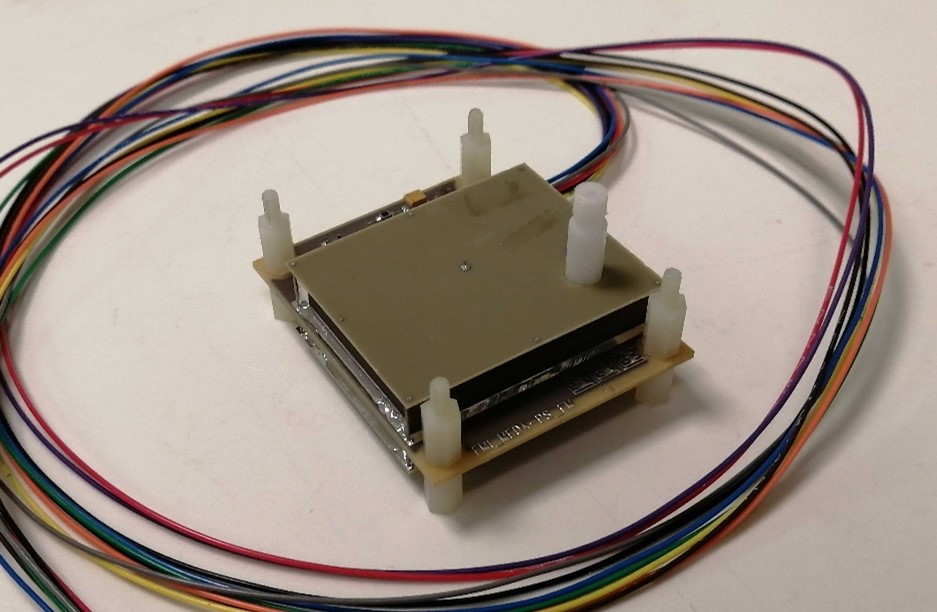Low-pressure sensor for Titan entry investigations of the Dragonfly mission
- 1Finnish Meteorological Institute, Helsinki, Finland (iina.jaakonaho@fmi.fi)
- 2German Aerospace Center (DLR), Cologne, Germany
1 Introduction
The upcoming Dragonfly rotorcraft mission by NASA is planned to be sent to the surface of Saturn’s moon Titan [1]. As part of the Dragonfly Entry Aerosciences Measurements (DrEAM) suite [2], the Dragonfly entry capsule will include a subsystem called COmbined Sensor System for Titan Atmosphere (COSSTA), developed by the Supersonic and Hypersonic Technologies Department of the DLR Institute of Aerodynamics and Flow Technology in cooperation with NASA (T. Thiele, private communication, 2023). One of the sensors of COSSTA is a pressure sensor developed by the Finnish Meteorological Institute (FMI). The sensor, named COSSTA-PL, is dedicated to measuring the static pressure on the entry capsule backshell.
The design of COSSTA-PL relies heavily on the heritage of FMI’s pressure sensors previously developed for Mars landers, such as the Curiosity rover of Mars Science Laboratory (MSL) and the Perseverance rover of Mars 2020. The optimal measurement range of COSSTA-PL is close to the typical surface pressure of Mars, namely up to about 10 hPa, with a capability to measure pressures up to 20 hPa.
2 Sensor description
COSSTA-PL is a miniature pressure device directly based on MEDA PS [3], the pressure sensor of the Perseverance rover. At its core are the Barocap® sensor head and transducer technologies developed by Vaisala. Barocap is a micromachined silicon pressure sensor based on capacitive sensing. COSSTA-PL contains two Barocap types, NGM and RSP2M, which are both optimized for the low-pressure range.
COSSTA-PL consists of two transducers, each working independently of the other. Transducer 1 contains two NGM type Barocap sensor heads while transducer 2 has two RSP2M type Barocaps. Both transducers also include two Thermocap temperature sensor heads and constant reference capacitors for data processing purposes. The main distinction from MEDA PS is that COSSTA-PL includes two PT1000 temperature sensors directly attached to the NGM Barocap sensor heads. As the Barocap readings are sensitive to temperature, the purpose of the PT1000 sensors is to provide the accurate temperature readings of the sensor heads.
The Barocap sensor heads and transducer electronics are enclosed by airtight Faraday shields made of PCB material (see Fig. 1). A small tube exits the shield, connecting the sensors with the surrounding pressure. The dimensions are 62×50×17 mm without the tube.

Figure 1. Prorotype model of COSSTA-PL
3 Testing and calibration
As the sensor may be exposed to extremely cold environment during the long cruise, initial testing of a prototype model was performed at DLR in Cologne to investigate how the sensor endures temperatures down to -150 °C. These were followed by further testing at FMI, focusing on verifying the operation of the ASIC in extremely low temperatures.
Calibration is planned to be performed mainly at FMI in the 0 to 20 hPa pressure range and -70 °C to +55 °C temperature range. Calibration down to -150 °C (TBC) is continued at the COSSTA level. The calibration will include measurements in both stable and changing pressure, as well as in changing temperature. Calibration checks at the higher level after integration and during the cruise phase are also planned.
References
[1] Lorenz, R. D. et al. (2018). Dragonfly: A Rotorcraft Lander Concept for Scientific Exploration at Titan, Johns Hopkins APL Technical Digest 34(3), pp. 374-387.
[2] Brandis, A. et al. (2022). Summary of Dragonfly’s Aerothermal Design and DrEAM Instrumentation Suite, 9th International Workshop on Radiation of High Temperature Gases for Space Missions, 12 – 16 Sep 2022, Santa Maria, Azores, Portugal.
[3] Jaakonaho, I. et al. (2023). Pressure sensor for the Mars 2020 Perseverance rover, Planetary and Space Science 239, 105815, https://doi.org/10.1016/j.pss.2023.105815.
How to cite: Jaakonaho, I., Hieta, M., Genzer, M., Polkko, J., Thiele, T., and Harri, A.-M.: Low-pressure sensor for Titan entry investigations of the Dragonfly mission, Europlanet Science Congress 2024, Berlin, Germany, 8–13 Sep 2024, EPSC2024-392, https://doi.org/10.5194/epsc2024-392, 2024.